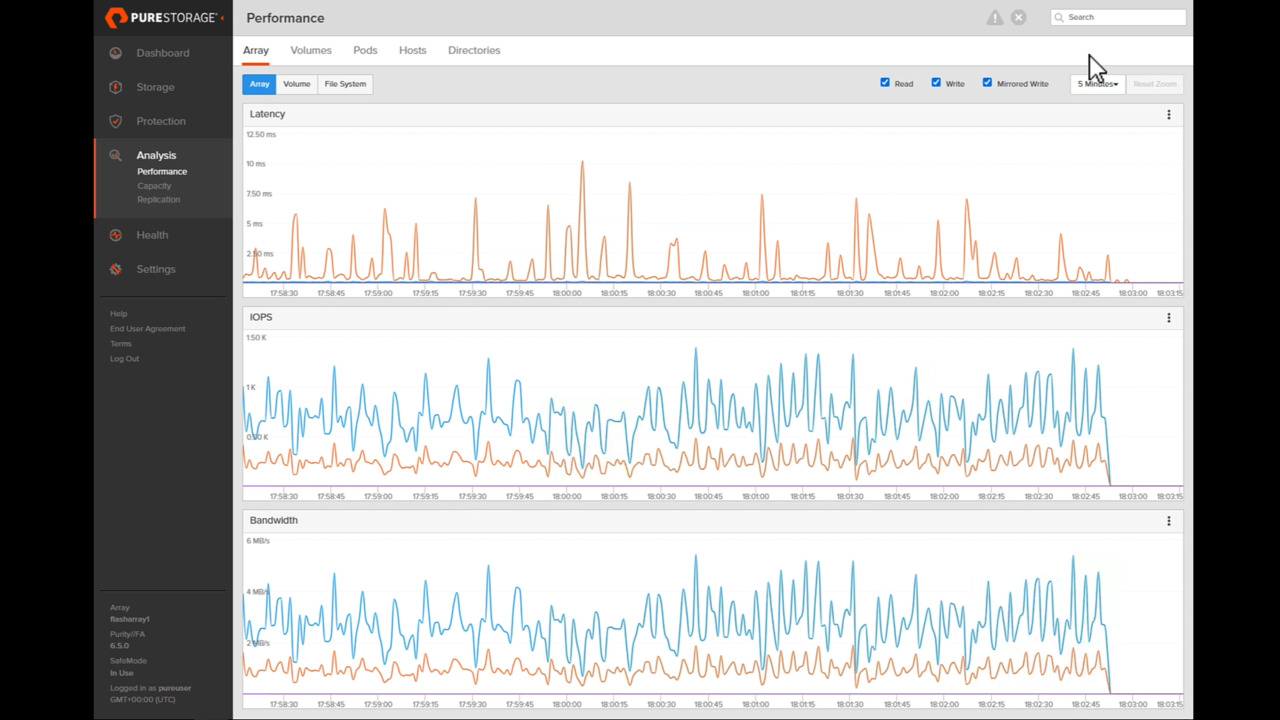00:13
Oh hey, hi there. I didn't see you come in again. Sorry about that. I seem to be doing that a lot during the series. Anyway, I decided to stop trying to read meditations and instead downloaded an audiobook of it. And unfortunately, it's being read back to me in the original Greek it was written in.
00:29
Seems like I have some translation work I have to do now. Anyway, welcome to part 3 of your flash array walkthrough. I hope you enjoy what you see. Welcome to the 3rd and final part of our Pier 360 flash array walkthrough. Now that you have the basics on how flash array can provision and deliver data,
00:51
let's check out how you can keep an eye on key metrics related to its performance. One thing to note with this video, we are solely focusing on reporting at the individual array level. You have even more performance analysis angles if your array is registered to send its telemetry to our Pier one service.
01:08
Check out its video series here on Pier 360 for more information. With that in mind, let's take a closer look at how we keep an eye on Flash array's performance. Just like with all the other functions on Flash array, performance analysis and health monitoring is accessed from the dashboard, and as you can see, we can get a little deeper on analyzing key performance metrics of variables beyond just
01:28
storage performance on Flash array's landing page. We're able to drill in on volumes, pods, hosts, and even specific directories if the array is configured to deliver file shares. We also gain a richer experience with these performance graphs because we can adjust their timelines anywhere from 5 minutes to 1 year. Anything beyond that limit can be reviewed in pier one if the flash array has been configured
01:50
to work with that service. Capacity analysis is just what you'd expect, which is a rolling history of your flash arrays consumed space. You can hold the mouse over the graph at any point in time for a quick readout of what those numbers are. And as you can see here, we can dig into other
02:07
aspects of consumption at the block volume, files directory, or even pod levels. And like the performance analysis section, we can adjust the graph timelines to go from 5-minute intervals all the way up to a full year's worth of data. Finally, we can check out key metrics associated with replication.
02:26
The main variables being reported here are network bandwidth consumed between the replication source and the remote targets. Pods reporting is a little different. It provides insight into important variables associated with pod to pod replication between flash array targets. This concept will be covered in a future video
02:43
on Pier 360. Health monitoring is exactly what you'd think. Performance data and operational status at the hardware level. As you can see from its initial dashboard, we get a comprehensive visual representation of Flash array's hardware components to include both controllers,
03:00
DFMs along with the controller they are assigned to, power supplies and interconnect ports, and finally, outbound network ports. We also can review all alerts and evaluate all network connections to upstream hosts or flash array replication targets. Finally, we can also dig into critical data related to the SAN network traffic from a
03:19
hardware perspective. And like other performance graphs, we can adjust the timeline from one hour to a one-year interval. Hey, congratulations. You made it through the 3rd section and now completed a pretty deep walk through a flash array. Our scale up storage endpoint.
03:35
I hope you got what you were looking for out of this series and look forward to seeing you on another Pier 360 video. Well, I won't see you, but you'll see me. I apologize for that temporary existential crisis there. Anyway, if you want to try out some of the things I demonstrated yourself,
03:51
click on the test drive prompt that'll pop up at the end of this video. And if you enjoyed what you saw here, be sure to check out the Pier 360 site for other topics that showcase how our data services platform is disrupting the enterprise storage market. See you soon.
